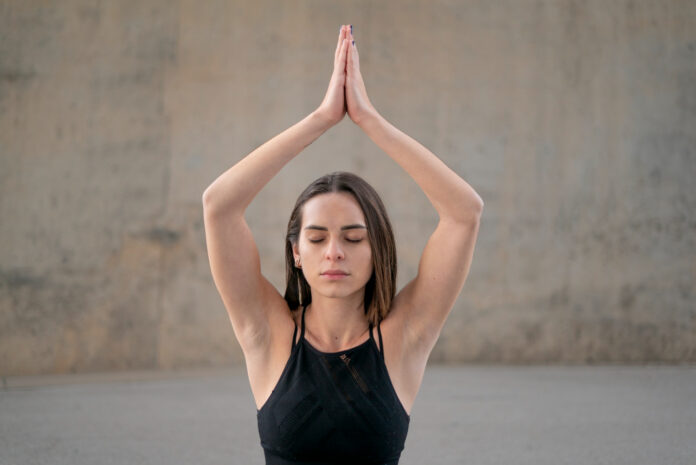Naked yoga, a practice that involves performing yoga postures without clothing, might seem unconventional to some, but it has garnered a following for its unique benefits and emphasis on self-acceptance. In this article, we’ll delve into what naked yoga is, explore its benefits, and address common misconceptions. Whether you’re curious about trying it or simply want to understand this practice better, read on to discover the world of naked yoga.
What is Naked Yoga?
Naked yoga, as the name suggests, involves practicing yoga in the nude. This practice can be performed in a class setting or at home, depending on individual comfort and preferences. The core principle of naked yoga is to connect with one’s body in its most natural state, free from the constraints of clothing. This practice emphasizes the importance of self-acceptance and mindfulness, allowing practitioners to fully experience their physicality and sensations without distractions.
The Benefits of Practicing Naked Yoga
1. Enhanced Body Awareness
Practicing yoga without clothing allows you to experience your body in its most natural form. This can lead to a heightened sense of body awareness as you become more attuned to the sensations and movements of your muscles and joints. Without the barrier of clothing, you can better understand how your body moves and where it may need more attention.
2. Improved Self-Acceptance
Naked yoga encourages self-acceptance by allowing you to see and embrace your body without judgment. Many people struggle with body image issues, and practicing yoga in the nude can help break down these barriers. By fostering a positive relationship with your body, you can build confidence and self-esteem.
3. Increased Freedom of Movement
Clothing can sometimes restrict your range of motion during yoga poses. Practicing naked yoga eliminates this issue, allowing for a greater freedom of movement. You can explore the full range of motion in your poses without the constraints of fabric, leading to a more fluid and comfortable practice.
4. Enhanced Mindfulness
Naked yoga requires a level of mindfulness and presence that can deepen your practice. When you are fully aware of your body and its sensations, you are more likely to stay focused on the present moment. This mindfulness can extend beyond the mat and positively impact other areas of your life.
5. Connection with Nature
Practicing yoga outdoors without clothing can enhance your connection with nature. The sensation of the sun and breeze on your skin can create a deeper sense of harmony and balance. Outdoor naked yoga sessions allow you to feel more in tune with your natural surroundings.
Common Misconceptions About Naked Yoga
1. It’s Only for the Brave
One common misconception is that naked yoga is only for those who are exceptionally confident or daring. In reality, naked yoga is about personal growth and self-exploration. It’s a practice that anyone can try, regardless of their level of confidence. Many people find that the initial discomfort quickly fades as they become accustomed to the practice.
2. It’s Sexual or Indecent
Naked yoga is often misunderstood as being sexual or inappropriate. However, the practice is about self-awareness and personal growth, not sexual expression. It’s important to approach naked yoga with the right mindset and respect for the practice. In a class setting, the environment is typically professional and focused on yoga rather than any form of exhibitionism.
3. It’s Only for Certain Body Types
Another misconception is that naked yoga is only for people with specific body types or shapes. In reality, naked yoga is inclusive and meant to embrace all body types. The practice is about accepting and celebrating your body as it is, regardless of its size or shape.
4. It Requires Special Facilities
Some people believe that practicing naked yoga requires special facilities or spaces. While it’s true that some studios offer naked yoga classes, you can also practice at home in a private space. The key is to create an environment where you feel comfortable and secure.
Tips for Trying Naked Yoga
1. Start at Home
If you’re new to naked yoga, starting in the privacy of your own home can help you become comfortable with the practice. Set up a space where you feel relaxed and free from interruptions. This can help you focus on your movements and sensations without external distractions.
2. Choose the Right Setting
If you decide to try a class, research the studio to ensure it aligns with your comfort level and values. Look for studios that emphasize a respectful and non-judgmental environment. Some studios offer classes specifically designed for beginners, which can be a great way to ease into the practice.
3. Practice Mindfulness
Approach naked yoga with mindfulness and a positive attitude. Focus on the sensations of your body and the experience of the practice rather than any self-conscious thoughts. Remember that the goal is to connect with your body and embrace self-acceptance.
4. Respect Your Boundaries
Listen to your body and respect your personal boundaries. If you feel uncomfortable or need to make adjustments, don’t hesitate to do so. Naked yoga is about self-discovery and comfort, so it’s important to honor your own needs and preferences.
Conclusion: Embracing the Practice
Naked yoga offers a unique opportunity to connect with your body in its most natural state. By focusing on self-acceptance, body awareness, and mindfulness, this practice can enhance your overall well-being and deepen your yoga experience. Whether you choose to practice at home or join a class, naked yoga can be a transformative journey toward greater self-love and freedom on the mat. Embrace the practice with an open mind and a positive attitude, and discover the profound benefits it has to offer.
